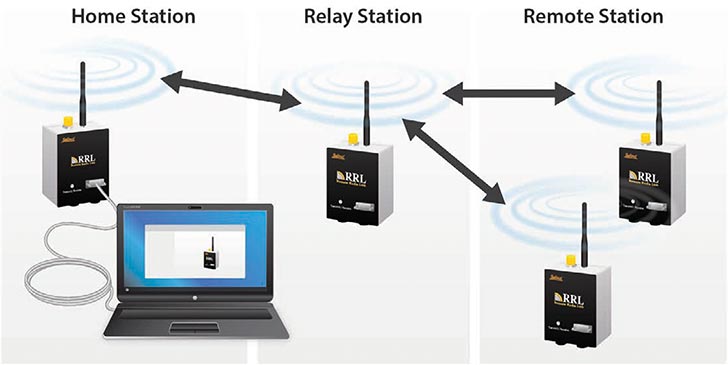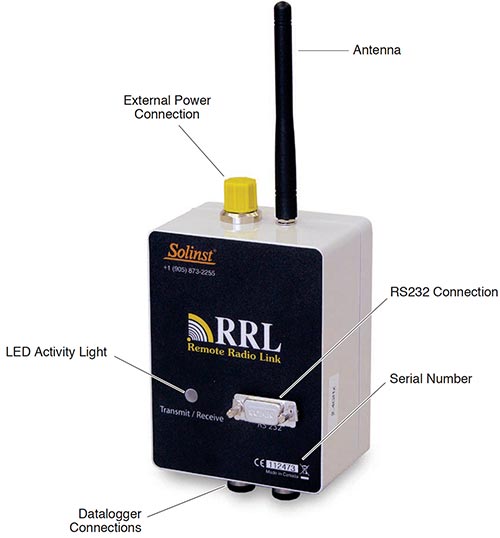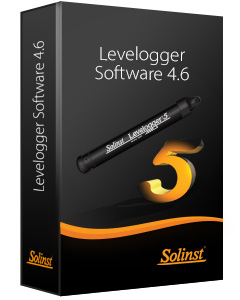All RRL Stations use the same hardware, and are programmed using a wizard in the Solinst Telemetry Software as a Home Station, Remote Station or Relay Station. As such, RRL Stations are interchangeable as required.

Figure 2-1 RRL Remote Radio Link Network
Home Station: Each RRL Network will have one Home Station. The Home Station is connected to a PC using an RS232 cable and requires an external power supply, as well as the internal batteries, to operate.
Note:
The RRL Home Station and Relay Stations require an external power supply, as well as the internal batteries.
Note:
You can connect your RRL Home Station to a remote STS Edge Telemetry System instead of a PC. See the STS Edge User Guide for more details on bridging the two systems.
Relay Station: When a Remote Station cannot communicate to the Home Station directly, due to distance or line-of-sight issues, a Relay Station can be used to transmit the data. Data from attached datalogger is stored at a Relay Station. However, with no dataloggers attached, data is not stored, it is only re-transmitted. The radio at a Relay Station is always on, therefore a continuous external power supply is required, in addition to the internal batteries.
Remote Station: The Remote Station will turn the radio module on and off based on the Report Rate scheduled. The Remote Station does not require an external power supply, unless there is a frequent Report Rate programmed.

Figure 2-2 RRL Remote Radio Link Station
A 900 MHz radio module is used in RRL Remote Radio Link Stations. RRL Stations come standard with six (6) 3.6V AA replaceable lithium batteries and antenna. There is input for two dataloggers, with the option of using Splitters to allow the connection of up to four dataloggers. There is a connection for an external power supply; the RS232 connection on each RRL Station is used for diagnostic, firmware updates and programming purposes.
Water Level Dataloggers, Direct Read Cables, Wellhead Cables and Reader Cables to be used with the System are purchased separately. External power cables, RS232 cable, higher gain antenna and Splitters are optional extras. External power sources (such as solar panels) are user supplied, as are other installation housings and requirements.
RRL Stations are designed to fit into 4.5" (115 mm) diameter wells for discrete placement. The case is rugged and waterproof with an IP66 rating and has an operating temperature range between -20 to +50 degrees Celsius.
RRL Stations have a non-volatile internal memory of 128 KB (13,000 sets of LT readings or 10,000 sets of LTC readings). A Remote Station stores collected data in its memory until the Home Station has been successfully contacted. The light on the RRL Station flashes with every transmission activity.




